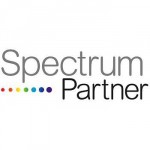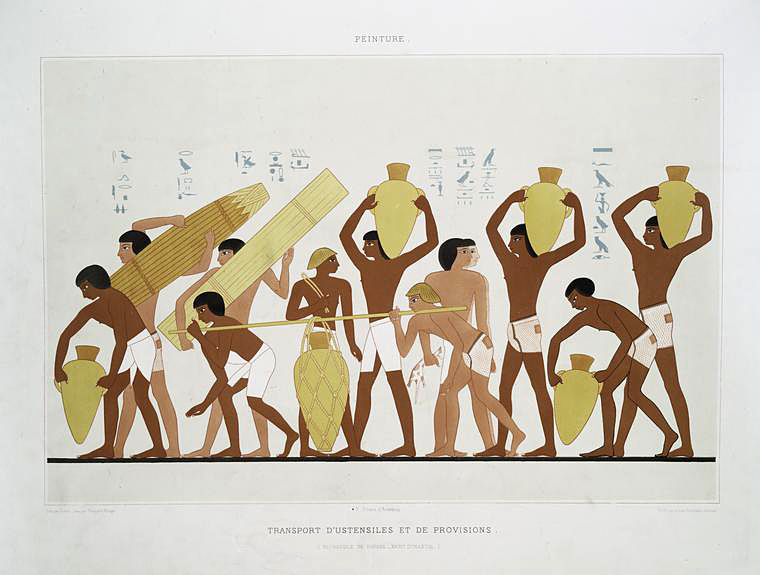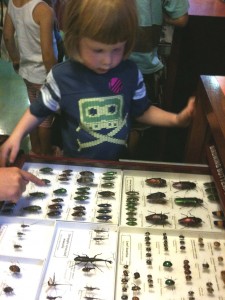It is common for museums to adhere to minimum standards of care and best practice for collection documentation. These are often defined by national agencies and cover legal responsibilities, museum accreditation processes and governance structures.
 The most widely adopted collection management standard is SPECTRUM. The Museum Documentation Association (MDA) in the UK first developed the SPECTRUM standard in the 1970s and it has been continually improved and extended since then. MDA changed their name to Collections Trust, and continues to promote and support the standard. It has become an international benchmark for collections management.
The most widely adopted collection management standard is SPECTRUM. The Museum Documentation Association (MDA) in the UK first developed the SPECTRUM standard in the 1970s and it has been continually improved and extended since then. MDA changed their name to Collections Trust, and continues to promote and support the standard. It has become an international benchmark for collections management.
As a SPECTRUM Partner, Vernon CMS adheres to all of the processes covered by the standard. This ensures not only that the standard of collection care is comprehensive, but also that the data entered into Vernon CMS is future-proofed, and can be shared with museum software of the future.
The following process definitions are outlined by SPECTRUM Standards, with specific reference to collection auditing.
1. Item valuations
Valuation control procedure
The management of information relating to the financial valuations placed on individual objects, or groups of objects, normally for insurance/indemnity purposes. Features include:
- Consistent application of policies and procedures;
- Valuation information is treated as confidential protected by controlled access;
- Valuations are updated as and when required.
Insurance and indemnity management procedure
Documenting and managing the insurance needs of objects both in an organisation’s permanent collection and those for which it is temporarily responsible. Features include:
- All objects in care are appropriately insured within the terms of legal, statutory and policy requirements;
- Regular review of insurance policies and renewals as required;
- Indemnification of all eligible objects while in transit
2. Location Management
Inventory control procedure
The maintenance of up-to-date information accounting for and locating all objects for which the organisation has a legal responsibility. This may include objects on loan, unaccessioned or previously undocumented items, temporarily deposited objects and support collections. Features include:
- Accountability for any object, at any time;
- Up-to-date information about all objects in the care of the organisation;
- Provide a reference to ownership of each object;
- Provide the current location of each object.
Location and movement control procedure
The documentation and management of information concerning the current and past locations of all objects or groups of objects in the organisation’s care to ensure the organisation can locate any object at any time. A location is a specific place where an object or group of objects is stored or displayed. Features include:
- Provide a record of the location where an object is normally displayed or stored;
- Provide a record of the location of an object when it is not at its normal location;
- Provide a record of any movement of an object;
- Provide a record of the person responsible for moving an object;
- Provide a history of an object’s previous locations, while in the organisation’s care.
 Transport procedure
Transport procedure
The management and documentation of the transport of objects for which the organisation is partially or fully responsible. Features include:
- Ensure that all transport is carried out in compliance with the organisation’s transport policy;
- Ensure that, in the case of borrowed objects, the requirements of the lender and their insurance policy (e.g. Government Indemnity) are met;
- Ensure that all legal obligations are complied with, including any customs requirements, CITES, airfreight security legislation, and firearms regulations;
- Ensure that a condition check of the object is carried out (and recorded) prior to transport arrangements being made;
- Ensure that appropriate insurance/indemnity arrangements are in place prior to the transport;
- Record and maintain an audit trail of the reasons for the move, mode of transport, dates of the transport, and details of those carrying out the transport.
3. Reporting
Audit procedure
The examination of objects or object information, in order to verify their location, authenticity, accuracy and relationships. Features include:
- Ensure that the organisation maintains, manages and documents a regular review of the objects in its collections and the information relating to them;
- Ensure that the audit of objects is based on the physical presence of the objects;
- Ensure that all relevant object-related documentation is updated as required in a timely manner;
- Ensure that remedial action is taken as required, following discovery of missing objects, wrongly or inadequately documented objects, or undocumented objects;
- Ensure that, wherever possible, inventory checks are conducted or witnessed by a person not responsible for their custody or record-keeping.
4. What happens when things go wrong?
Risk management procedure
The management and documentation of information relating to potential threats to an organisation’s collections and the objects for which it is temporarily responsible. It includes the provision of information enabling preventative measures to be taken as well as documentation supporting disaster planning. Features include:
- A risk assessment on objects in its care;
- The maintenance of an information file of individuals and organisations to approach in the event of a disaster (to be reviewed annually);
- The training of staff and volunteers in the management of risk and in disaster recovery;
- Accountability for objects during and after a disaster.
Loss and damage procedure
Managing and documenting an efficient response to the discovery of loss of, or damage to, object(s) whilst in the care of the organisation. Features include:
- Enable the organisation to take all reasonable steps to prevent further loss or damage;
- Ensure that all decisions and actions in the organisation’s response to damage or loss are fully documented.
5. Provenance
Cataloguing procedure
The compilation and maintenance of key information, formally identifying and describing objects. It may include information concerning the provenance of objects and also collections management documentation e.g. details of acquisition, conservation, exhibition and loan history, and location history. It need not bring together in one location everything known about an object, but should provide cross-references to any other relevant information source known to the organisation. Features include:
- Provide a level of description sufficient to identify an object or group of objects and its differences from other, similar objects;
- Provide an historic archive relating to an object or cross-references to sources where information can be found;
- Be held in a system that allows convenient access, e.g. using indexes or free-text retrieval.
 Object condition checking and technical assessment procedure
Object condition checking and technical assessment procedure
The management and documentation of information about the make-up and condition of an object, and recommendations for its use, treatment and surrounding environment. Features include:
- Ensure that all condition check documentation is up-to-date;
- Ensure that the date, name of the condition checker and the reason for checking is recorded;
- Ensure condition checking is carried out whenever a change to the object, its use or surrounding environment occurs;
- Enable the condition of an object to be monitored over time.
Conservation and collections care procedure
The documentation and management of information about interventive and preventive conservation activities. Features include:
- Ensure all conservation information is up-to-date;
- Ensure appropriate authorisation is received prior to conservation taking place;
- Ensure details of all interventive conservation work and preventive conservation measures are recorded, with the name of the person who performed the work, the organisation to which they belong and the date on which it took place.
All of these minimum requirements are met and exceeded in Vernon CMS.
We are fortunate to have enjoyed long and productive relationships with many institutions over the years. By listening to the experts, by asking questions and by actively developing Vernon CMS to meet those expectations, we offer software to comprehensively manage museum collection processes.
